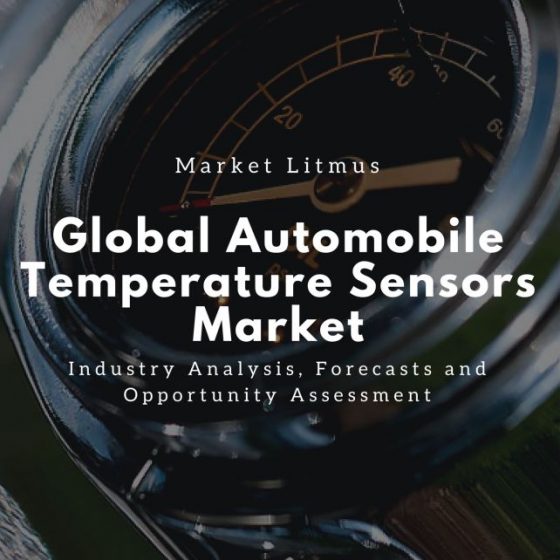Description
The Automotive industry has evolved drastically over the past decade, and vehicles have shifted from being mechanically controlled to having more electronic control over the mechanical parts. The rapid advancement of the microcontroller and sensor technology is giving rise to high levels of vehicle safety. This is done through the incorporation of components such as automotive sensors and actuators. The major function of these sensors and actuators is to provide passenger comfort, safety and improve the vehicle performance. The Global Automotive Sensors Market is driven by the increasing demand for the components such as magnetic sensors, wheel speed sensors, acceleration sensors and yaw rate sensors. Vehicles are incorporating the Airbag Systems, ABS (Anti-lock Braking System), ESP (Electronic Stability Program), Traction Control and EBD (Electronic Brake force Distribution) systems to improve the vehicle safety. These functionalities not only reduce the burden of the driver in controlling the vehicle, but also prevent accidents by accurately measuring and applying the brake force required to stop the vehicle in case of impending accidents. The emerging trend of the addition of these components into the electronic system of the premium and luxury vehicles, through which safety can be increased significantly, is thus promoting the Automotive Sensors Market.
End-users
The end users of the Global Automotive Sensors Market are Automotive Companies, OEMs (Original Equipment Manufacturers), Component Manufacturers, Sensor Manufacturers, Chip Designers, Semiconductor companies, Integrated Device Manufacturers, Design Tool Vendors, and enterprises involved in M2M (Machine to Machine) and IOT (Internet of Things).
Market Dynamics
The key drivers of the Automotive Sensors Market are the safety standards of vehicles set by the government, stringent government regulations, and the changing demand of the consumer. Environmental concerns are also impacting this industry as automotive giants are being pushed to reduce emissions and increase the fuel economy. Automotive sensors such as pressure and temperature sensors are experiencing a surge in demand and deployment due to their diverse applications. Intelligent Parking Systems, ADAS (Advanced Driver Assistance Systems) and Autonomous Vehicles are the future of mobility. In fact, incorporation of these functions is increasing the number of sensor content per vehicle. The passenger car segment, which has been segmented into low, medium and high- end vehicles, drives the demand for various kinds of sensors which need to be used in the vehicles based on the customer demand. Currently, the automotive sensors market is growing at a CAGR of 6.71%, and it is valued to be around $22.94 Billion, which is expected to reach $36.42 Billion by 2022. But the factor which is hampering the growth of this industry is the price competitive market, which forces the manufacturers to reduce the profit margins and provide technology at a lower cost. Stiff competition is also a cause for growth reduction.
Market Segmentation
The market for the Automotive Sensors is divided into the following categories:
1. By Sensor Type: Temperature Sensor, Pressure Sensor, Position Sensor, Speed Sensor, Inertial Sensor, Acceleration Sensors, Yaw Rate Sensors and others
2. By the Vehicle Type: Passenger Cars, LCV ( Light Commercial Vehicles) and HCV ( Heavy Commercial Vehicles)
3. By Application: Chassis, Powertrain, Exhaust, Body Control, Safety, Telematics and others
4. By Geography: North America, Europe, Asia
Regional/Geographic Analysis
America, Europe and,the Asia Pacific are leading the market of Automotive Sensors – Japan and Germany being the leading automotive manufacturing regions of the world. Hence, these regions are continuously developing new applications and technologies for vehicles. Also, the presence of leading automotive companies such as Bosch, Delphi, Denso, Continental and Sensata in these regions, make them more favourable for adopting the latest sensor technologies. India, China, and Brazil are also becoming the booming markets for seed sensors due to their continuous technological advancements.
Key Players
The major players in the Automotive Sensors Market are companies such as Robert Bosch GMBH (Germany), DENSO Corporation (Japan), Continental AG (Germany), Analog Devices Inc. (USA),Delphi Automotive PLC (UK), Sensata Technologies, Inc. (US),Infenion Technologies AG (Germany) and STMicroelectronics (Switzerland).
- Market segments
- Market Drivers, Restraints and Opportunities
- Market Size & Forecast 2016 to 2022
- Supply & Demand Value Chain
- Market – Current Trends
- Competition & Major Companies
- Technology and R&D Status
- Porters Five Force Analysis
- Strategic and Critical Success Factor Analysis of Key Players
- North America
- US and Canada
- Latin America
- Mexico, Brazil, Argentina and Rest of Latin America
- Western Europe
- EU5 (Germany, France, Italy, Spain, U.K.)
- Nordic Countries (Denmark, Finland, Norway, and Sweden)
- Benelux (Belgium, The Netherlands, and Luxembourg)
- Rest of Western Europe
- Eastern Europe
- Russia
- Poland
- Rest of Eastern Europe
- Asia Pacific
- China
- India
- Japan
- Australia and New Zealand
- Rest of Asia Pacific
- Middle East and Africa
- GCC countries (Saudi Arabia, Oman, Qatar, Bahrain, UAE and Kuwait)
- South Africa
- North Africa
- Rest of Middle East and Africa
This report is an elaborate aggregation of primary inputs from industry experts and participants across the supply chain. It provides details on market segmentation which is derived from several product mapping exercises, macroeconomic parameters and other qualitative and quantitative insights. The impact of all such factors is delivered across multiple market segments and geographies.
- Detailed Historical Overview (Market Origins, Product Launch Timeline, etc.)
- Consumer and Pricing Analysis
- Market dynamics of the industry
- Market Segmentation
- Estimated Market Sizing in terms of volume and value
- Recent trends in Market and impact
- Research Status and Technology Overview
- Extensive Industry Structure Coverage





